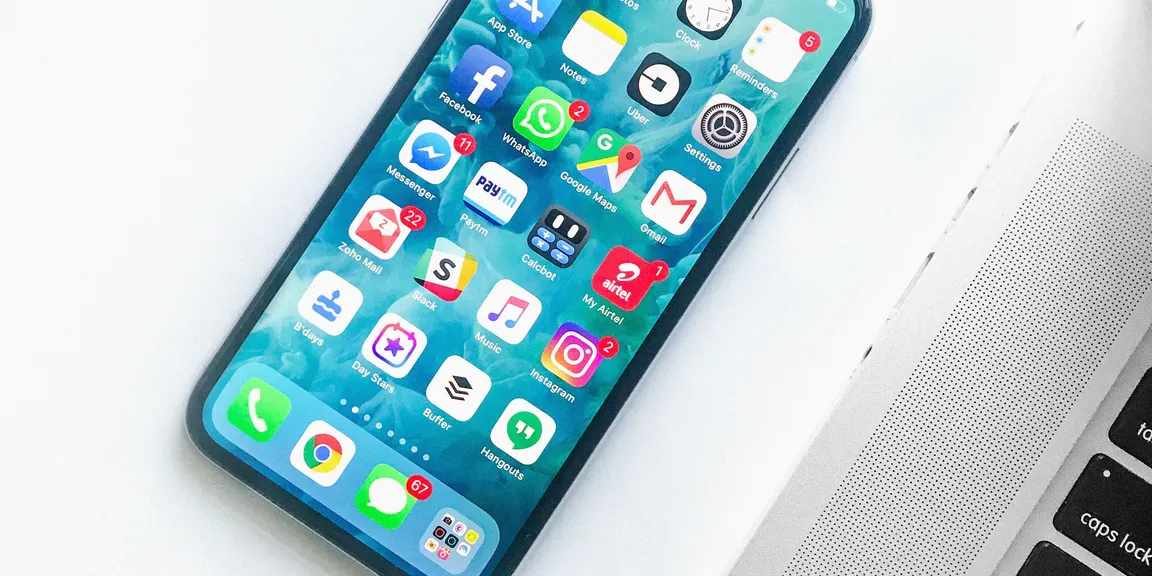

5 of the most popular apps reviewed!
What makes an app tick? A deep dive into the most popular apps.
Between the Google Play Store and the iOS App Store, 4.1 million apps were available for download in 2018. That poses the classic conundrum of having too many choices. Especially, in an app economy like India, that beat USA to become the second largest country when it comes to app downloads.
This begs the question, ‘What compels Indians to download an app? Is it the ease of use, UI and UX or are we taking steps to protect our data given the occurrence of numerous data breaches?
Let’s do a deep dive into some of the most popular apps to find out what sets them apart from run-of-the-mill apps.
Digital Wallet Platform
- Google Pay (Tez)
Google launched Tez in August 2017 and although it is primarily a digital wallet, it isn’t in direct competition with Paytm or MobiKwik. Unlike the other digital wallets, Tez works directly in tandem with customer’s bank accounts. Google decided to rebrand Tez as ‘Google Pay’ along with added functionalities. Let’s break it down -
Onboarding: Signing up takes less than a few minutes. All you need is a Google account, the phone number that’s linked to your bank account and set up a 4 digit UPI pin. There’s no ambiguity about the process and doesn’t lead to undue frustration like some of the other UPI apps.
Ease of use: Google Pay supports 3 modes of transactions - QR codes, UPI IDs, and Tez Mode that relies on audio QR. The app is extremely user-friendly and doesn’t require a lot of brainpower to get things started.
Portability: Tez works seamlessly on iPhones and smartphones running on Android.
Learning Curve: Since the app is not even remotely cluttered, there isn’t a big learning curve. A couple of minutes on the app will tell you everything you need to know.
UI/UX: Tez aka Google Pay has a minimalistic design which is easy on the eyes. The Tez mode which translates to ‘quick’ in Hindi doesn’t have any noticeable lags.
The QR code scan is neatly tucked away while frequent contacts and businesses that consumers interact with are available on the home screen for quick payments. There’s also a concise help center in case payments made do not make it to the receiver.
The stellar feature is the scratch cards that are awarded after every transaction made. Two digital scratch cards are awarded to the user - one that can be opened immediately which feeds into the constant need for instant gratification and the second that is available at a later date makes for a clever way to increase app retention rates. Who doesn’t like free money? But just like Blackjack, the house always wins.
Supposedly, you can win up to Rs 1000/- but going from personal experience, it’s usually a measly amount. But hey, free money is free money. Tez also has a referral code that allows you to invite users and earn some quick cash just like with most apps nowadays. Overall, the colour scheme, user-friendliness and the elegant simplicity gets two big thumbs up from me.
Download Size: 11 MB on Android and 48.6 MB on iOS
Data Usage and Security: Multi-layered security is offered by your bank, UPI, and Google. Each transaction is secured with your UPI PIN making the security virtually airtight. As with other apps, Google collects data pertaining to your location, email, phone number among other things. You can read their privacy policy here.
Unique features: Unlike Paytm, you can transfer money to someone who doesn’t have a Google Pay account. The Tez Mode that uses audio QR codes does not require you to add someone to your contacts. Google Pay is also adding functionalities such as pre-approved loans, integration with dozens of retail apps and more.
Usefulness: Google Pay as is and with the added features is head and shoulders above the other digital wallets. Since it is a digital wallet platform and not a digital wallet, your money stays secure in your account. Other digital wallets like Paytm have had customers complaining about unauthorized charges being made which isn’t the case with Google Pay. It is no surprise that Tez has been crowned as the No. 1 free app on iOS App store.
How can it improve: The Scan QR code feature should be front and center in the app rather than being tucked away. Integration with other apps is also a must to stay relevant. In the pursuit of adding more features, there shouldn’t be any compromises made on the minimalistic design.
Age and Education: 17+ is the official recommendation on the App Store. But, even children with rudimentary mobile experience can get it to work. Knowledge of plain, simple English is required to work the app. It isn’t overly complex given that 90% of India doesn’t speak English.
Recommendation: 5/5
Note-taking service
2. Google Keep
Another app by Google, Keep helps you keep your notes organized and make checklists. A wide variety of media such as images, voice recordings, and videos are also supported.
Onboarding: The onboarding is pretty straightforward and can be skipped if needed. All the essential features of the app are indicated for smooth sailing.
Ease of Use: Keep is a fairly simple app that allows you to create notes - handwritten, voice or typed, make lists and take or upload images. It takes a very minimal amount of time to get acquainted with the app and its features which is a big plus.
Portability: Android and iOS devices. Also works with Windows OS and is available as an extension on Google Chrome.
Learning Curve: Google has a penchant for maintaining simplicity in their apps. Just like Tez, Keep doesn’t force you to use too many brain cells to get the ball rolling. Download the app and you can start making checklists and taking notes almost immediately.
UI/UX: The UI of the app is very simple with a plain white background that doesn’t feel cluttered. It is a little too simple in my opinion. A dash of colour wouldn’t have hurt but the whole note-taking process is seamless. Users are also able to record voice notes or draw something which adds to the versatility of the app. All the notes and checklists can be shared with other Google accounts making it the perfect app for collaboration. It is also possible to set an alarm - date, time and place - in conjunction with the note which is a very nifty feature. This in stark difference to its competitor which has been around for much longer, Evernote whose UI can give you a headache. Google Keep has drawn inspiration from Evernote's best features and minimized clutter.
Download Size: Size varies with device on Android and takes up 120.3 MB on iOS
Data Usage and Security: Like Google’s other apps, data is protected from unauthorized use and a ton of data is collected to improve search results. Google’s Privacy Policy is available here.
Unique features: You can Search your notes instead of sifting through them one by one. The search also shows you the types of lists you’ve created - Lists, Reminders and Drawing and differentiates them based on things on the list - Grocery list, Shopping list. It is also possible for you to pin important ones to the top making sure you don’t end up missing any of them. The Drawing pen has a lot of variants to choose from. The size of the brush stroke and the colour can be anything you want. If you wish to use three different sizes and colour simultaneously, 3 different pens are available on the same screen.
Usefulness: Keep is extremely useful for taking personal notes especially when the inspiration strikes and you don’t have any pen or paper handy. Since you can collaborate with other people, it is also excellent for a team effort which lets the other person know what has been done.
How can it improve: The design lacks creativity. Although you can choose the colour of your notes, it can look like an eyesore sometimes. The home screen isn’t extremely intuitive. Instead of having all the different options scattered, it might make sense to have a single button that says Create and then lets the user choose what type of note or list they want to create.
Age and Education: The official age rating is 4+ on the App Store. This app only requires a rudimentary understanding of English and since the Google Keyboard supports other languages, anyone can take notes in their language if needed.
Recommendation: 3.5/5
File-hosting service
3. Dropbox
A brain of a couple of MIT students, Dropbox hosts files on the cloud, offers file synchronization and client software. Based on a freemium model, it allows the same file to be kept up to date by a number of people.
Onboarding: The onboarding is a treat with all the inviting graphics and cartoons. All it takes is a Google account to get started.
Ease of Use: You can do a lot with the app which may be confusing at first but it is fairly easy to navigate through.
Portability: Works on Android and iOS devices.
Learning Curve: There may be some difficulties at first getting the hang of things but half a day can make you a Dropbox expert.
UI/UX: The UI is brilliant and adheres to human-centered design. The one single Create button that’s missing from Keep is definitely front and center here. Connecting a computer, dumping photos and sharing files can be done with the utmost ease. The really cool graphics make you enthusiastic about sharing your documents like never before.
Download Size: Varies with device on Android; 266.2 MB on iOS
Data Usage and Security: If keeping your data secure is a priority, Dropbox isn’t right for you. It collects and transmits all your data with other users and third-party apps. Read their privacy policy here.
Unique features: Dropbox allows you to scan documents, receipts or anything that you would like to make digital.
Usefulness: Dropbox is the essence of a digital office space. Everything is stored in the cloud where it can be accessed by authorized users to make edits in real time.
How can it improve: The fremium model may be apt for individuals but not for businesses. A lot of free features can only be accessed once you pay for it. Live Photos on iOS don’t remain that way when uploaded to Dropbox.
Age and Education: The official age recommendation is 4+ but the app certainly is geared towards businesses and individuals who want to store a ton of data.
Recommendation: 4/5
Cross-platform messaging and voice service
4. WhatsApp
Acquired by Facebook in February 2014, WhatsApp is a universal messaging app that has a lot of consumers divided over its usefulness. It rightfully has claimed the top position on the leaderboard when it comes to free Android apps in India.
Onboarding: The process is fairly simple wherein you enter your number, enter the OTP and set a profile name and picture which is optional.
Ease of Use: WhatsApp is extremely easy to use. Whether it’s sending messages, calling or making video calls, it is incredibly simple to get things started.
Portability: Works on all Android and iOS devices as well as the desktop with Whatsapp Web.
Learning Curve: Getting started doesn’t require special skills but some of the features like Starred messages, sending a chat conversation to your email or replying to a particular conversation aren’t intuitive. This is where you might have to Google things but once you get the hang of it, it isn’t tough at all.
UI/UX: WhatsApp has a ton of issues with its UI/UX. Since it depends on the phone number to log you in and not a username and password, you cannot log into your profile on another device. This issue spills over when it comes to WhatsApp Web as well. It requires you to authenticate your phone each and every time so if you are low on battery, WhatsApp Web gets disabled. The data backup on iOS and Android takes place in two different places so if you switch devices, you can say goodbye to all your data. There isn’t an option to edit sent messages. Other messaging platforms like Facebook, Telegram offer this feature whereas WhatsApp only allows you to delete messages only within a short period of time. Even when you do, it is visible to the other person that you deleted a message. WhatsApp Group chats deserve an article of their own. There aren’t any channels to sign up for, your number is visible to anyone on the group and when you change your number, everyone else gets notified as well.
Of course, there are a few silver linings given how popular the app is. It has a ton of cool messaging features including new WhatsApp stickers that make communication easy and effective.
Download Size: For Android, the size varies with device and on iOS it is a whopping 137.5 MB
Data Usage and Security: WhatsApp does offer end-to-end encryption but a lot of private data like your address book, shared memory and when you spoke to whom is still synced and stored with its parent company, Facebook.
Unique features: WhatsApp offers a different channel for business accounts that lets them automate messages and has a host of other tools as well. WhatsApp Pay has also rolled out for several users in India allowing them to send money through UPI.
Usefulness: Since the app is extremely popular, WhatsApp serves a ton of uses. Being a free app, it is extremely useful for consumers. The added features like voice and video calling also provide value to the service.
How can it improve: The UI could use a major overhaul given how bad some of its features are. Just like YouTube, WhatsApp should also offer a dark version that doesn’t strain the eyes. Also, changing to the standard username and password combination will be mighty useful.
Age and Education: Official recommendation is 12+ but in reality, anyone can use it. It might be a little complicated at first for people with limited education but once you get the hang of it, it isn’t that hard. A fact which is evidenced by the millions of Good Morning messages that clutter your gallery.
Recommendation: 4/5
Learning App
5. BYJU’s - The Learning App
BYJU’s has become the world’s most valued ed-tech startup as of 2018. Primarily aimed at changing how school students consume information, BYJU’s has been making some major strides since its inception
Onboarding: The Registration process is a tad long because one has to enter their name, email address, mobile number, city as well as what course they want to study. Unlike most apps that let you log with Facebook and Google, BYJU’s requires all of this information upfront.
Ease of Use: The app is really easy to use and doesn’t have any noticeable lags. Once you complete the onboarding, you see there are only two screens. One where you can access video learning and the other where you can get a home demo and buy the BYJU’s tab if needed.
Portability: Works on both iOS and Android phones.
Learning Curve: The app in itself is straightforward and doesn’t take an high IQ to figure out what’s what. I suspect getting used to the format may take time for someone who is used to taking classes in a classroom.
UI/UX: The UI of the app is pretty neat and aesthetically pleasing making it great for children getting hooked to the app. It is very apparent to the user how to proceed from one feature to the next without having to think too much. Finding out how much you’ve learned so far is easy as it is finding the most popular videos on the course as everything is on the same screen without appearing cluttered.
Download Size: For Android, the size varies with device and takes up 164.1 MB on iOS
Data Usage and Security: BYJU’s automatically collects information about the device you use, IP address, OS as well utilizes the information that you give them to analyse trends. Read the complete privacy policy here.
Unique features: Students can take quizzes, check out their global leaderboard rank and opt for one-on-one mentoring. The whole format of teaching via instructional videos isn't a new concept but the app gives it a fresh appeal. There is an option to Chat with customer service which isn’t available in most apps in the same industry.
Usefulness: The app is definitely useful going by how quickly it has gained so much traction. School students and those preparing for IAS, GMAT, CAT or GRE can definitely benefit from an orthodox way of teaching.
How can it improve: The Sign out option is tucked away in the ‘Your profile’ section which can make it hard if two people are trying to study from the same device. A lot of users have also complained that the app crashes which I haven’t personally experienced. The app can always improve by adding tons of new courses.
Age and Education: Anyone who is 4 or above can use the app. It may take some parental guidance at first but the app isn’t overly complicated.
Recommendation: 5/5
Indians and the mobile app economy
Although 68% of Indians do feel that they might be a victim of a data breach, it is quite evident that data security isn't a priority for Indians. Case in point, WhatsApp. Edward Snowden's creation Signal is a far superior choice when it comes to data encryption albeit it doesn't have as many features as WhatsApp does. Indians are happy to relinquish the control over their personal data over to companies instead of proactively safeguarding it.
With Jio's disruption in the market bringing the price of being online lower all round, more Indians than ever are downloading apps and backing up data on the cloud. In fact, the smartphone user base is predicted to grow to 442.5 million by 2025. That means data privacy and security is going to be a major concern in the coming years if not now.
On another note, a less than optimal UI/UX of an app isn't always a dealbreaker. However, India's population will be dominated by 400 million millennials by 2020 for whom an exemplary UI/UX will be mandatory.
But, are we willing to pay for quality?
Yes. Contrary to popular belief, Indians are more willing than ever to pay for an app and make in-app purchases as long as it serves their purpose. Currently, it's only limited to apps that either let you Photoshop your features to the point where you are unrecognizable in real life or gaming apps.
Free apps are great as long as we realize that when we aren't paying for a product, we are the prodc








1546496577255.jpeg?fm=png&auto=format)





